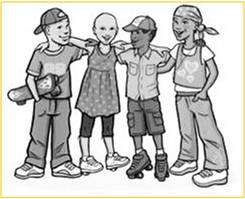Amrit Bhatti, PhD studen School Of Human & Health Sciences, University of Huddersfield
Alopecia is an inflammatory condition in which individuals lose some or all of their hair. Although Alopecia is most prevalent among younger people (aged between 15 and 30 years), there is limited research on young people and very little on the perspective of close relatives. Following a systematic search of the literature and discussions with Alopecia UK (volunteers) I established my PhD research focus; firstly to explore the experiences and perceptions of parents who have an adolescent child with alopecia and secondly to explore the experiences and perceptions of adolescents who have alopecia or who have a history of the condition. So far I have completed the first part of my research which has explored parental experiences and perceptions.
What did I do?
 I recruited via the Alopecia UK charity and website, 15 parents from different areas of the UK. I carried out online one to one email interviews with each parent participant. These were not one time questioning sessions. Rather, participants were emailed one interview question a week over six weeks, along with additional personalised questions to probe and explore responses. Data were analysed using Interpretative Phenomenological Analysis – the sequencing and time delay of questions allowed participants the time to think about their experiences and perceptions in depth. The approach to data collection appears to have enhanced the phenomenological nature of the investigation, allowing participants to ruminate and offer in depth responses.
I recruited via the Alopecia UK charity and website, 15 parents from different areas of the UK. I carried out online one to one email interviews with each parent participant. These were not one time questioning sessions. Rather, participants were emailed one interview question a week over six weeks, along with additional personalised questions to probe and explore responses. Data were analysed using Interpretative Phenomenological Analysis – the sequencing and time delay of questions allowed participants the time to think about their experiences and perceptions in depth. The approach to data collection appears to have enhanced the phenomenological nature of the investigation, allowing participants to ruminate and offer in depth responses.
What did I find?
IPA guides both techniques of data collection and analysis. Through engagement with the data and involving myself in descriptively and interpretively coding the email responses, five main themes were identified:
1. A whole series of events: The all encompassing nature of alopecia
Parents expressed the panic they experienced, the difficulty of not understanding the condition, the unpredictability of the condition and living the cycle of re-growth.
2. Alopecia taking over self: The emotional melt down
Participants recognised that their everyday lives had now changed as they described how they became aware of their ‘dominating worry’, ‘heartbreak’, and the ‘emotional need to accept’.
3. The social dimensions of managing the condition: wanting a sense of normality
The pressures from social effects resulted in their strive to be as ‘normal as possible’ not only for the child, but for themselves. This theme included the complexities of hiding the alopecia and evidences of bullying.
4. Shifting roles of Medical health professionals
There was talk of ‘’Feeling let down’’, ‘’lack of empathy’’ and ‘‘lack of support’’ in describing their experience of seeing the medical health professionals. There was an increasing realisation of needing to take on the expert as parent role.
5. Change in family roles and identity
‘Protecting the child’, ‘decision making’ and ‘emotional coping’ all contributed towards the change in parent’s family dynamics.
What next?
I am currently writing up these themes in a way that will allow readers to enter into the world of parents with children who have alopecia. I have completed data collection with adolescents using the same data collection technique, which has also proved to be effective. However, I have yet to commence my analysis on the adolescent data set.
It is hoped that my work for both related studies will be of interest to both the practice and research community alike.